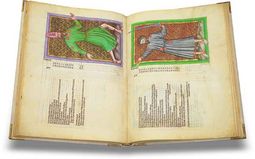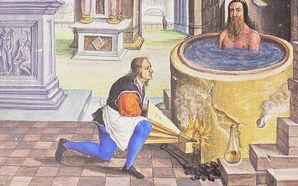Astronomy and Astrology
Gazing upon the stars, trying make sense of them and to find order in the swirl of light is one humanity’s oldest pastimes, and manuscripts on astronomy and astrology, considered to be one and the same at the time, were among the most complex and beautiful of the European Middle Ages.
In the early and high Middle Ages, the main focus was on ancient mythology with the traditional constellations. The production of manuscripts concerned with the stars increased significantly from the 12th century onward and by the Late Middle Ages, works on astronomy and astrology were widespread and were being utilized by rich burghers and aristocrats alike for advice on daily life, for example, to look up the best time to build a house or travel.
Developing the skills to map the stars helped with the development of cartography and geography – two disciplines crucial to the Age of Exploration that developed at the end of the Middle Ages, when Europeans began sailing around the world looking for sea routes to access the spices and goods of the Far East.
These manuscripts distinguish themselves equally for their artistic refinement and their value as evidence of early scientific research, making them among the most interesting examples of medieval book illumination.
Demonstration of a Sample Page

Aratea
Orion the Hunter
Based on the ancient text Phaenomena by Aratos of Soloi, this Carolingian manuscript is one of the oldest medieval manuscripts concerning the stars, originating from the early-9th century at the behest of either the Emperor Louis the Pious or his wife Judith. Although not an accurate depiction of the actual constellations, it is a milestone in the history of astrology and astronomy.
The constellation Orion is one of the most prominent in the sky and is named for a hunter in Greek mythology, but figures into in the folklore of many peoples. The talented but anonymous artist portrays Orion in a classical tunic, animal skin over one arm and holding a sling. Lepus the hare, who Orion is often depicted hunting, is shown running between his legs.












